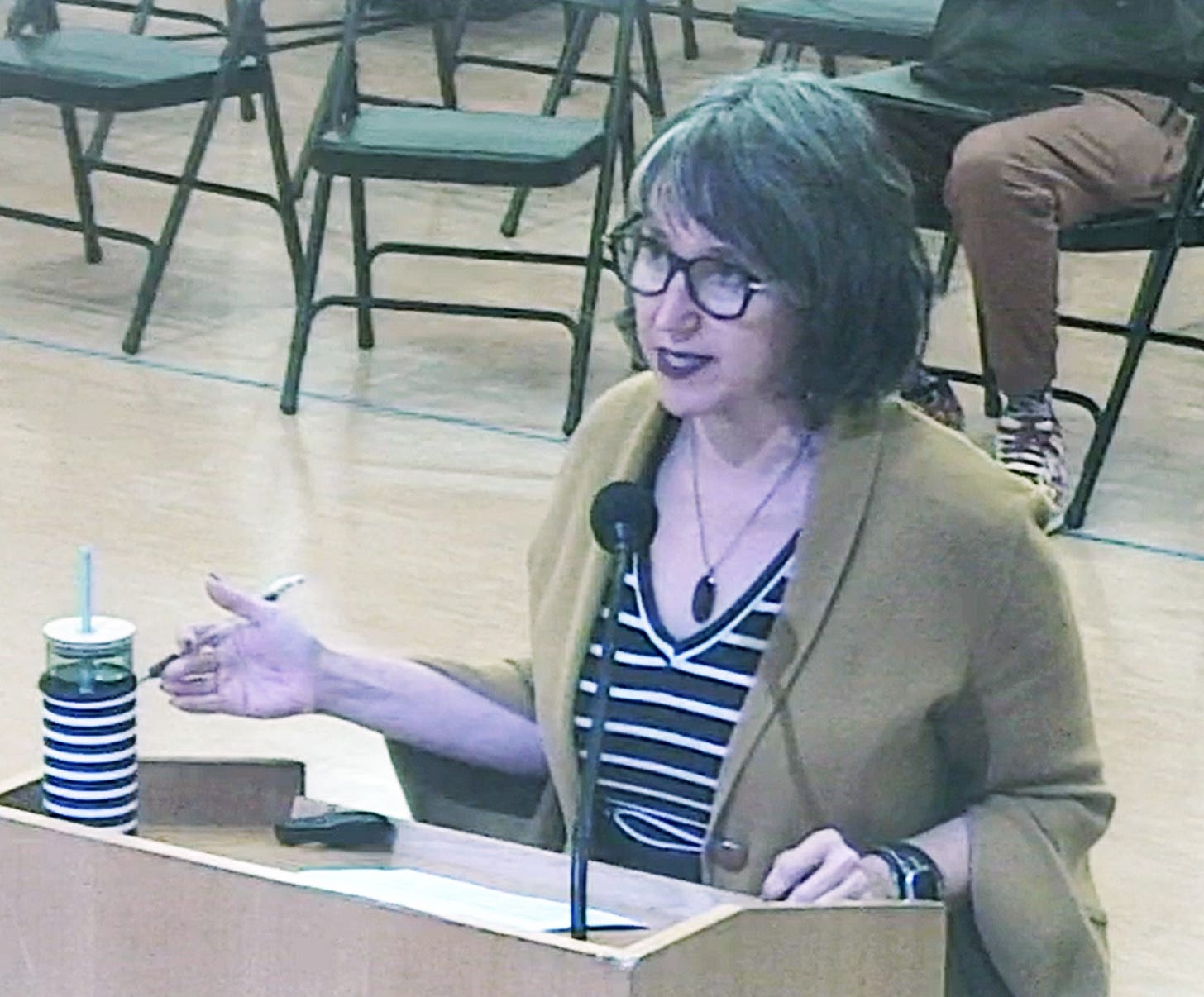Oakland schools budgeting 101: a primer on OUSD’s budget process
A brief overview of how OUSD's budget is governed and how decisions are made
Oakland Report is covering the Oakland Unified School District’s (OUSD’s) board of education’s efforts to close a $115 million near-term budget deficit in an attempt to avoid a slide back into state receivership. In this installment, we provide a primer on OUSD’s budget, specifically focusing on governance and how decisions are made.
Future installments in this series will take a look into where the money comes from and where it goes, the backgrounds of the current board members, the legal and political dynamics shaping their decision-making, and why balancing the budget continues to be such a challenge for OUSD.
Public school finances in California are intricate and complex, and OUSD’s budget is particularly complicated and difficult for most people to comprehend. In this article, we take a moment to zoom out and explain how OUSD is governed and how its budgeting decisions are made.
The first thing to understand is that OUSD’s budget governance is multi-layered. At a high level:
The OUSD board of education governs and approves the budget.
The OUSD superintendent and staff propose and manage it.
The Alameda County Office of Education (ACOE) provides oversight.
The State of California sets funding levels and fiscal rules through legislation and the Department of Education (CDE).
The City of Oakland has almost no direct authority over the budget, as education budgets are primarily state-funded and district-governed, though the city could exert significant political influence if it chose to.
The Oakland Education Association (OEA) is not formally part of the budgeting process, but shapes it significantly given that labor costs make up >70% of OUSD’s budget.
We’ll unpack each of these in more detail:
The OUSD board of education
By law, the members of the OUSD board of education are the primary decision-makers on the budget.
This is a seven-member elected board, with district representatives serving 4-year terms; and also includes two non-voting student directors.
The board has specific committees, including Budget & Finance, that dig into the details of the budget and make recommendations, and then the entire board votes on major items like fund allocation, labor contracts, and major spending initiatives or cuts.
School board positions are not full-time, and despite the work being very demanding, elected board members only receive a small stipend ($826/month) for their work.
School board positions are elected positions, and candidates typically rely on financial contributions from supporters to help cover the costs of campaigning. In some cases, candidates may receive additional support from outside political committees.
You can find the profiles of current board members here.
The OUSD superintendent and professional staff
The OUSD superintendent and staff prepare and execute the budget based on the guidance that they receive from the board.
The superintendent is hired by the board, often through an extensive executive search process, and can be removed by a simple majority vote. Once chosen, the superintendent functions as the “CEO” of OUSD, with broad authority to hire, manage and dismiss executive staff.
With regard to the budget, the Chief Business Officer and the budget office play the most critical role. This is the team that actually “rolls up their sleeves” and builds projections based on enrollment, staffing, and state funding formulas. This group manages daily expenditures and proposes mid-year adjustments and cost savings, as well as maintaining compliance with state accounting and reporting requirements.
While the Chief Business Officer and the budget office execute on the day to day work of budgeting, the superintendent and the board must set the high-level priorities and lead on hard decisions.
The current superintendent is serving in an interim capacity while the board conducts a search for a permanent superintendent. You can find her profile here.
The Alameda County Office of Education
ACOE is the fiscal oversight agency for OUSD (and the 17 other school districts in Alameda county).
In other words, ACOE functions primarily as the “watchdog”, not the actual decision maker or implementer, though it does have legal rights to approve or disapprove of district budgets.
Under the California State Education Code, ACOE must review and approve OUSD’s budget and interim financial reports, and can disapprove or require revisions if reserves fall below the minimum threshold (2%) or if financial projections indicate that the district cannot meet its obligations in the current or subsequent two school years.
During the long period of state oversight of OUSD, ACOE worked in close collaboration with the state trustee put in place to oversee the repayment of the 2003 emergency loan.
You can find the current superintendent’s profile here.

The State of California
The State of California writes the rules and funds the system, defining the parameters within which OUSD must execute. It oversees implementation of state policy through the California Department of Education, which administers the allocation of funds and reviews district budgets for solvency.
At the highest level, the education budget is downstream of the state budget set by the Legislature and the Governor, with an initial determination of how much of state revenue should be used to fund public education. For the 2024-2025 school year, 27.3% of the general fund was dedicated to K-12 education, with an additional 8% dedicated to higher education.
Within that budget, the state sets the funding formula to determine how much money goes to each district. That formula is known as the Local Control Funding Formula (LCFF), and focuses primarily on attendance, with the ability to receive extra funds for providing education to low-income, English-learner, and foster-youth students. Conversely, if a student is not sent to public school (or is technically enrolled but is chronically absent) that means less money goes to that school.
For the 2024-2025 school year, this formula was used to allocate funds across more than 1000 school districts with more than 5.8 million students enrolled.
Separate from the general state education budget, California also approves specific restricted funding programs, and monitors the fiscal health of districts.
You can learn more about the California Department of Education and the standards it sets for fiscal solvency here.
The City of Oakland
The City of Oakland has no legal authority over OUSD’s budget or operations – it is a partner and influencer rather than a governing body. That being said, the Mayor and City Council can still exert significant political influence if they choose to. Specifically, they may:
Advocate for initiatives at OUSD,
Endorse or campaign for (or against) school board candidates
Propose ballot initiatives to provide additional local funding, as they did in 2008 (Measure G) and 2016 (Measure G1),
Prioritize city resources to support school needs, for example through public safety support at school sites, streetscape improvements, safe routes to school initiatives, and other city services and infrastructure.
Unfortunately, the City of Oakland has its own serious budget challenges to deal with at present, including a structural budget deficit and expensive lawsuits with hundreds of millions of dollars in potential damages that threaten to drive the city itself into insolvency. As a result, little political capital is being spent to shape dynamics at OUSD.
The Oakland Education Association and other unions
The OEA and multiple other public employee unions may have no formal role in the district’s budgeting or governance structure, but the unions exert tremendous influence over OUSD’s financial decision-making because more than 70% of the district’s budget is tied to labor costs. OEA and the other unions actively represent their members’ interests through robust engagement with OUSD in legal and political spheres.
OEA represents more than 3,000 teachers, counselors, librarians, nurses, and other staff. What these roles have in common is that they are “certificated”, with a professional certification required to do the work.
Through collective bargaining, the union negotiates wages, benefits, class sizes, staffing ratios, and working conditions, shaping both how much the district spends and how resources are distributed across schools.
The OEA endorsed four of the seven current OUSD board members, including President Jennifer Brouhard and Vice President Valarie Bachelor.
There are additional unions in OUSD including Service Employees International Union Local 1021 (custodians, clerical staff, etc.), Teamsters Local 856 (security officers, transportation staff, etc.), Unified Administrators of Oakland Schools (principals, vice principals, etc.), and the Oakland Child Development Corps (early childhood education staff), but OEA is by far the largest and most influential.
You can learn more about the OEA here.
The OUSD budget timeline and process
Each year, the rubber meets the road between the school board, the superintendent and the budget office. Planning begins at the start of the year, followed by detailed study sessions and public hearings. Major changes to the budget require collaboration with key stakeholders and partners, especially the OEA. The budget is adopted at the end of June, which is then presented to ACOE, which may approve it, reject it, or offer conditional approval. From there, the District offers interim reports and then completes a final audit of the past school year.
The annual calendar looks roughly like this:
As you can see by the calendar, OUSD is currently seeking ACOE approval of its 2025-2026 budget as well as adopting its initially proposed 2026-2027 budget. Given that the ACOE is currently withholding approval given the large structural deficit, the coming weeks are critical to determine if OUSD can right the ship, as we recently covered.
In our next installment, we’ll zoom in on exactly where the money comes from to fund public education in Oakland, and how it is managed and allocated.
Subscribe for free to Oakland Report to receive our articles in your inbox, and consider donating to support our work. We are a volunteer-run, nonprofit organization, and your donation is tax-deductible.





Thank you. Awesome information. Looking forward to future installments.
Very illuminating article, though tough to watch OUSD and City of Oakland so poorly managed.